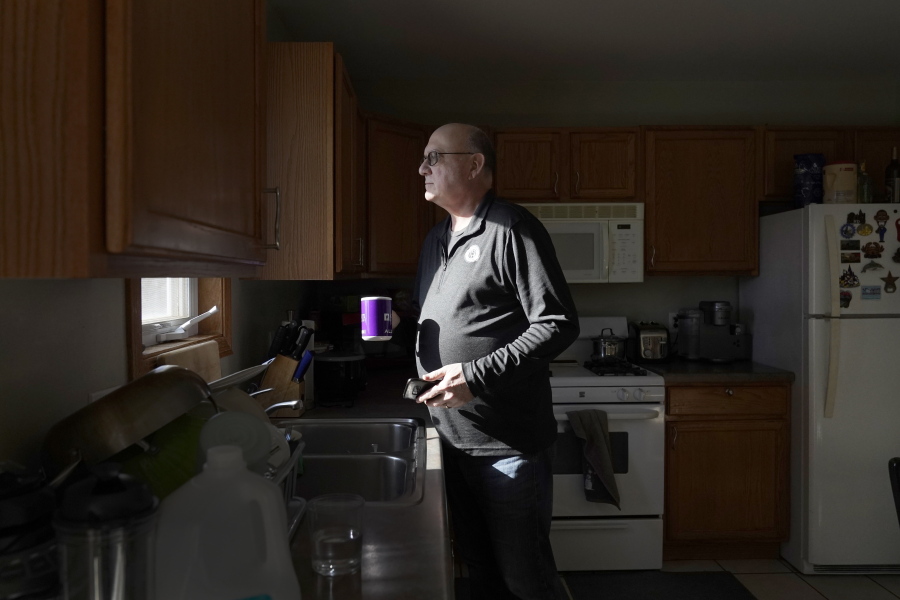Roger Strukhoff was being treated for intestinal bleeding at a hospital outside Chicago this month when he suffered a mild heart attack.
Normally, the 67-year-old would have been sent to the intensive care unit. But Strukhoff said it was overrun with COVID-19 patients, and the staff instead had to wheel a heart monitor into his room and quickly administer nitroglycerin and morphine.
“A doctor I know pretty well said, ‘Roger, we’re going to have to improvise right here,’” said Strukhoff, who lives in DeKalb, Ill.
The omicron surge this winter has not only swamped U.S. hospitals with record numbers of patients with COVID-19, it has also caused frightening moments and major headaches for people trying to get treatment for other ailments.
Less-urgent procedures have been put on hold around the country, such as cochlear implant surgeries and steroid injections for rheumatoid arthritis. And people with all sorts of medical complaints have had to wait in emergency rooms for hours longer than usual.
Mat Gleason said he wheeled his 92-year-old father, Eugene Gleason, into a Los Angeles-area emergency room last week for a transfusion to treat a blood disorder. It should have taken about seven to 10 hours, Gleason said, but his dad was there for 48 hours.
He said his father called him after 10 hours, asking for a blanket.
“He told me later, ‘I just assumed they forgot about me,” said Gleason, 57, who works as an art critic. “And yet he wasn’t the only person in that room. There were dozens of people” But Gleason added: “I’m not begrudging the hospital at all. They did a great job.”
An average of almost 144,000 people were in the hospital in the U.S. with COVID-19 as of Tuesday, the highest level on record, according to the Centers for Disease Control and Prevention. Hospitals in a few states such as New York and Connecticut that experienced early omicron surges are starting to see an easing of the patient load, but many other places are overwhelmed.
Hospitals say the COVID-19 patients aren’t as sick as those during the last surge. And many of them are being admitted for reasons other than COVID-19 and only incidentally testing positive for the virus.
Rick Pollack, CEO and president of the American Hospital Association, said the surge has had a widespread effect on the availability of care for people who have non-COVID-19 health problems. He said a number of factors are at play: More people are in the hospital, and a high number of health care workers are out with COVID-19, worsening staffing shortages that existed well before the pandemic.
As of Wednesday, roughly 23 percent of hospitals nationwide were reporting critical staff shortages, Pollack said.
Mike Bawden, a 59-year-old marketing consultant with a history of blood clots in his lungs, said he couldn’t get an appointment to see his doctor in Davenport, Iowa, because his coughing symptoms were too similar to COVID-19. The doctor’s office was concerned about the virus spreading to others.
After nearly two weeks, Bawden went to a walk-in clinic, which sent him to the emergency room at Genesis Medical Center-East in Davenport. He said he waited almost six hours in an overflowing ER before he was seen. A scan showed clots in his lungs, as he suspected, and he was prescribed blood thinners.
“It’s always so easy to Monday morning quarterback the ER, but everyone was really nice — even the other patients,” Bawden said. “I think it’s important for folks to realize that nobody’s the villain.”



